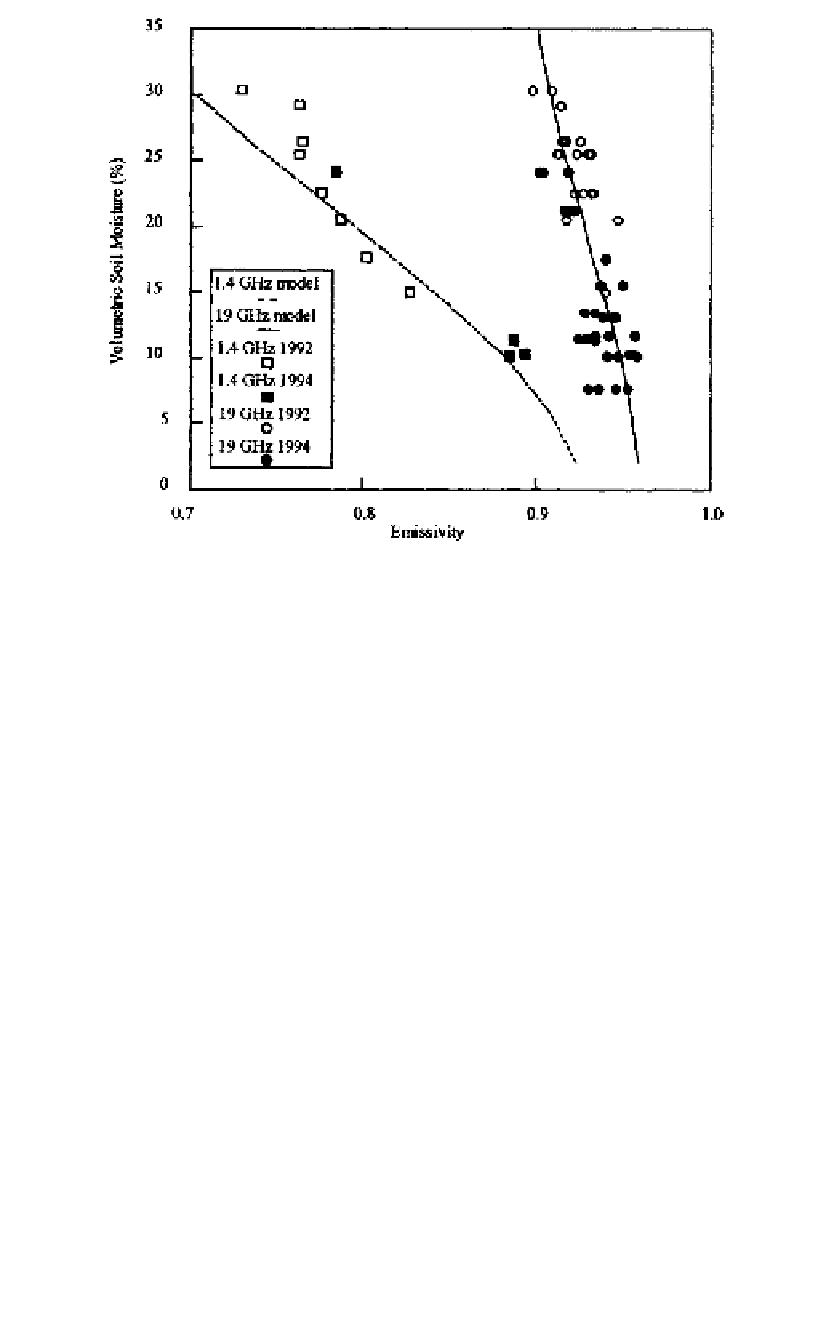Agriculture Reference
In-Depth Information
1
2
3
4
5
6
7
8
9
10
11
12
13
14
15
16
17
18
19
20
21
22
23
24
25
26
27
28
29
30
31
32
33
34
35
36
37
38
39
40
41
42
43
44
45
46
[93],
Line
——
0.2
——
Norm
PgEn
Fig
ure 7.1
Observed and modeled relationships between microwave emissivity and soil mois-
ture (Jackson, 1997).
[93],
a high degree of uncertainty at higher frequencies. In addition, at high
frequencies other investigators have found that the single scattering albedo
must be considered (Owe et al., 1992; Njoku and Li, 1999).
The weakness of the vegetation correction has led to a reconsideration of
the application of the single channel/ancillary data algorithm when using
high-frequency microwave data for soil moisture estimation. As a result,
several investigators have examined a variation of the approach proposed
in Njoku and Li (1999). In this approach, a series of equations for predict-
ing the brightness temperature for several channels is solved iteratively. Sev-
eral channels (polarizations and/or frequencies) can be used subject to the
constraint that the number of unknowns is less than or equal to the number
of equations. Based on practical considerations and existing data sources,
a soil moisture retrieval algorithm uses the lowest microwave frequency
available for both polarizations. Therefore, there will be two independent
observations. By controlling and specifying parameters, the unknowns in
the radiative transfer equations can be reduced to the dielectric constant
and another free variable, such as the vegetation optical depth. A more
exhaustive validation of this approach is needed.
Another multiple-channel approach to soil moisture retrieval was pro-
posed by Wigneron et al. (2000). They suggested using measurements made
at several viewing angles. A challenge in this approach is obtaining simul-












































Search WWH ::

Custom Search